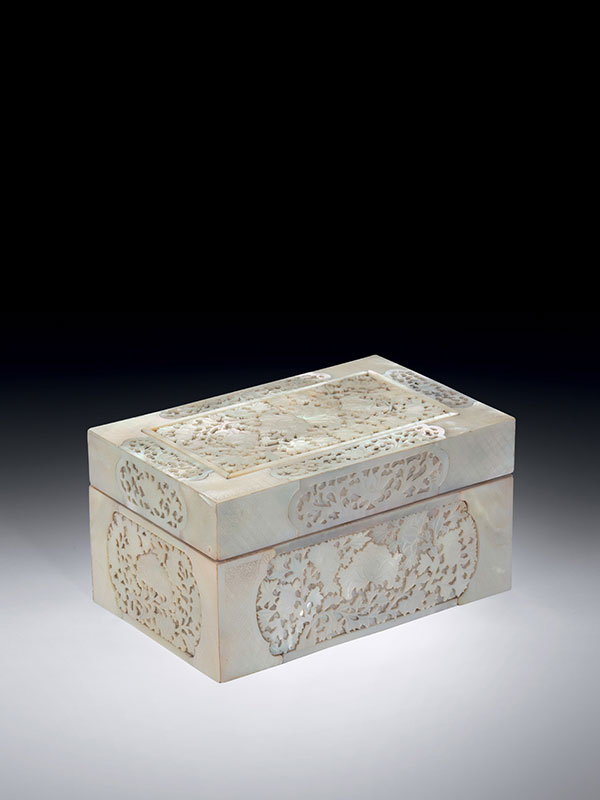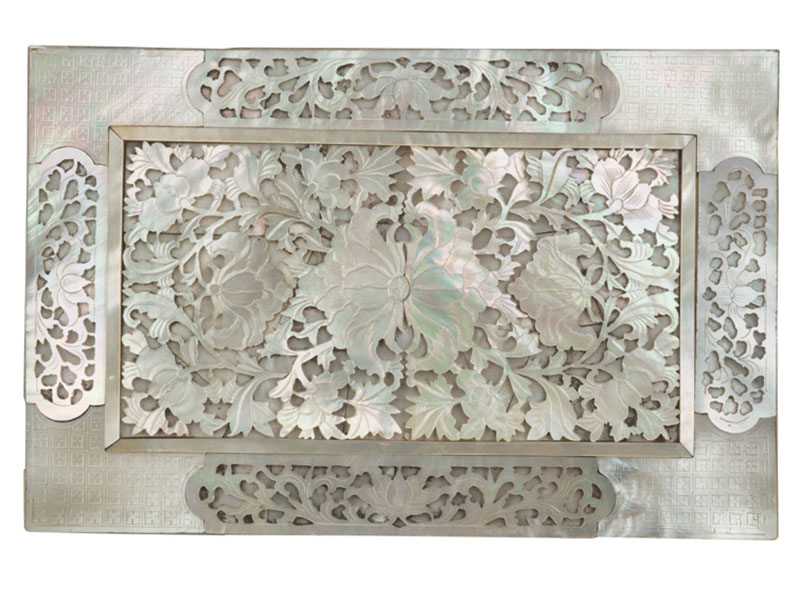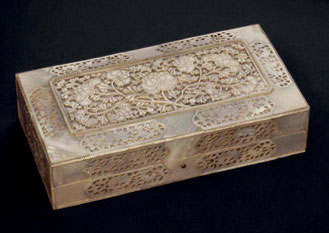Wood box veneered with mother-of-pearl
A rectangular wood box with separate cover, veneered with mother-of-pearl pieces, deeply carved in partial openwork. The flat top is decorated with a rectangular cartouche, finely carved with mirrored images of peony and interspersed tendrils. The wide bands and the sides of the cover are decorated with lotus flowers, whilst the straight sides of the box are carved with peony and tendrils against a background of incised square pattern. The flat base is composed of irregular pieces of mother-of-pearl, imitating a cracked-ice effect. The interior of both box and cover is covered in reddish lacquer with some gold splashes.
The tropical coastline of Guangdong is the most likely source of the mother-of-pearl used to create this charming box. A floral design against a ‘cracked-ice‘ ground became popular during the Kangxi period (1662 – 1722), as this ground was said to imitate that of the crackled glaze found on Guan ceramic wares of the Song dynasty (960 – 1279). Mother-of-pearl was commonly used to produce game sets comprising boxes and counters for various card games, which became fashionable in 18th century Europe.[1] The existence of a large mother-of-pearl box in the collection of the Victoria and Albert museum, containing gaming counters bearing the arms of the Best family and dated to 1775, is testament to this (fig. 1).[2]
- Clunas, C., Chinese Carving, Victoria and Albert Museum, London, 1996, p. 32
- Clunas, C. op.cit, no. 78, p. 100



